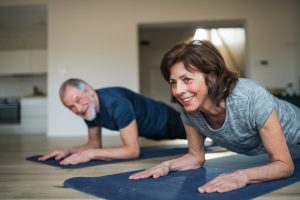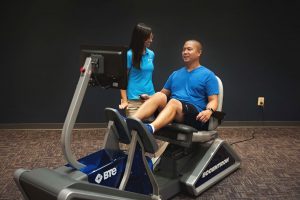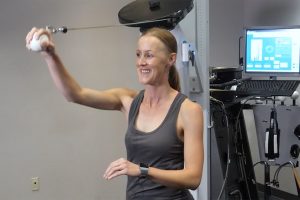
Planks: The Do-it-All Exercise for Rehab and Fitness
Treatment GuidelinesThere are hundreds of ways to do planks. This article is not intended to give you yet another opinion on any of the variables. However, the purpose is to remind us how to correctly address the needs and deficits of each of our clients.
Over the last decade, it seems like every fitness program and many back rehabilitation programs contain one particular exercise with little modification: the plank. So why do so many Physical Therapists, Athletic Trainers, coaches, fitness experts and even the military recommend planks? Let’s briefly discuss how planks fit into therapy and fitness.
How planks got started
First, let’s talk a little about where the plank originated. There is not one clear and concise origin. However, it is speculated that the first version of planks traces back to Joseph Pilates (yes, that Pilates) in the early 1900s. However, Pilates and planks were not widely popular outside of his small circle and some of the dance community.
More recently, social media helped spread its popularity into mainstream fitness. A well-respected researcher by the name of Dr. Stuart McGill (we will come back to him shortly) has brought added attention and scrutiny to the exercise with his publications.
We have probably all recommended planks at some point. This could have been to a novice beginner who is having back pains up to a professional golfer working to increase their power potential.
A plank of all trades
Done correctly, a plank works essentially every muscle group. Specifically, it increases strength and endurance of muscles that support the spine and pelvis. The abdominal muscles are a primary target, as these muscles are designed to stabilize or stop movement of the spine. Ultimately, this exercise can improve shoulder strength (scapular retraction), hip strength, posture and function. It can also reduce acute and chronic pain1.
Planks can benefit almost anyone, from athletes to the elderly. They can help strengthen golfers’ shoulders to avoid golf injuries. They can also help improve pelvic muscles to avoid incontinence in older adults.
There seem to be hundreds of approaches as to where to start, how long to hold, how many sets to perform, and variations of the exercise. This article is not intended to give you yet another opinion on any of the variables. However, the purpose is to remind us all to keep an objective mind on how to correctly address the needs and deficits of each of our clients.
How long to hold a plank?
Think about the number of times you have heard about a plank challenge or competition. This is simply how long you can hold this isometric contraction. The Guinness World Record is currently 10 hours and 10 minutes2. That’s an entire working day spent in one position!
Remember the name Stuart McGill? Dr. McGill is a professor of spine biomechanics and has a strong opinion on the matter. In an interview with Business Insider, he shot down the idea of holding them for an extended period of time. He stated that for the average person (probably most of our patients), long holds are a waste of time.
He recommends holding a plank for 10-second intervals and doing multiple sets3. Better yet, he recommends including it along with multiple other exercises targeted for spinal strength and stability. For example, popular variations include the mountain climber, the jacks, side planks, and ball walkouts. These target more than one position and plane of movement.
Planks in rehab and fitness programs
Starting easy and with less time is recommended to help you better assess how your client will respond to the exercise. Adding time and complexity may be necessary for some, while a basic program may still be effective to others. Try to avoid the same recipe for all clients as not all people are built the same. If you include planks in your recommendation, it’s important to include functional activities as well.
Ultimately, you are the expert and should have clear rationale behind your approach for each person that you are working with. Done correctly, and with variation, they can help improve overall core strength. This means that less back pain and fewer core-related injuries can be both short- and long-term effects of a properly prescribed plank program.
Jeffrey Johnson, MA, ATC
Clinical Specialist
BTE
References
- Gerard, J. 2014. Reality Check: Are Planks Really the Best Core Exercise? American Council on Exercise. https://www.acefitness.org/education-and-resources/professional/prosource/february-2014/3680/reality-check-are-planks-really-the-best-core-exercise
- Longest time in an abdominal plank position (male). Guinness World Records. https://www.guinnessworldrecords.com/world-records/longest-time-in-an-abdominal-plank-position
- Fitzmaurice, R. 2018. A professor with 30 years of experience says there’s no point in holding the plank for longer than 10 seconds – and says you shouldn’t do sit-ups first thing in the morning. Business Insider. https://www.businessinsider.com/sports-scientist-says-there-is-no-point-in-holding-plank-for-long-time-2018-3





